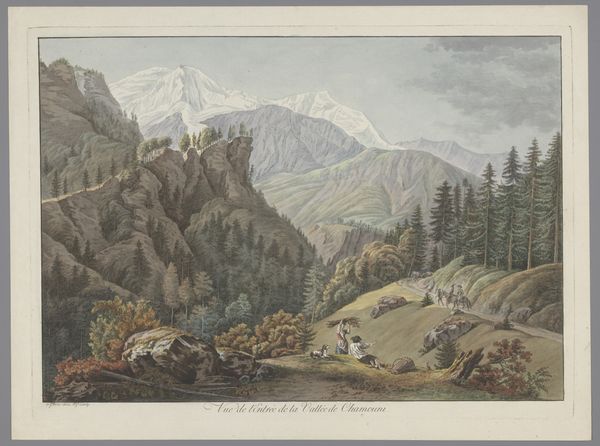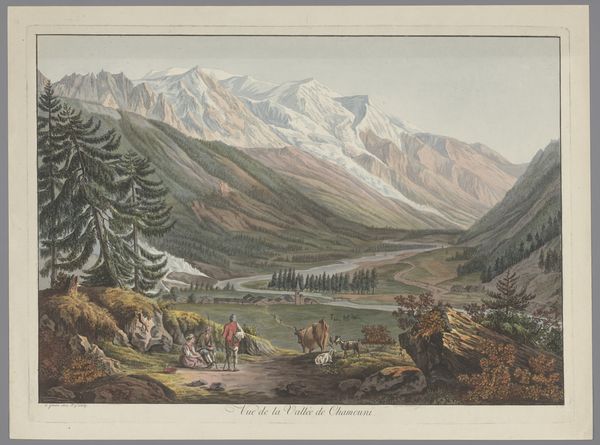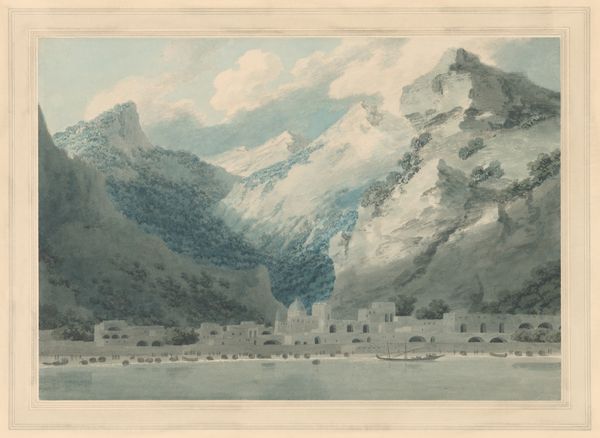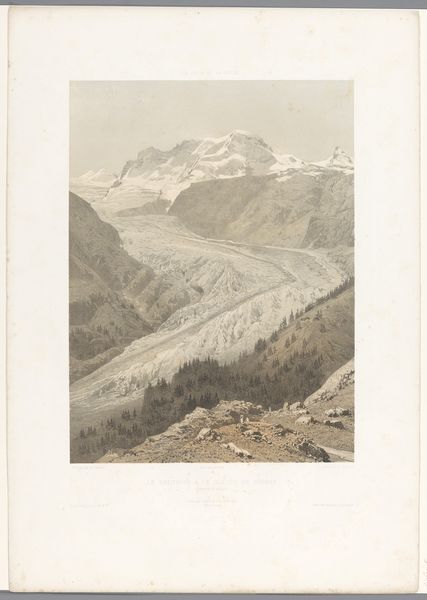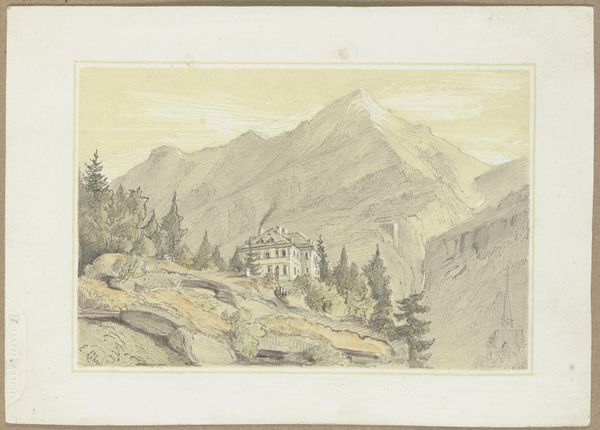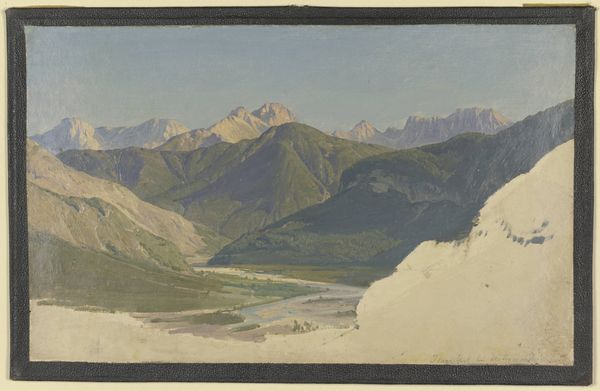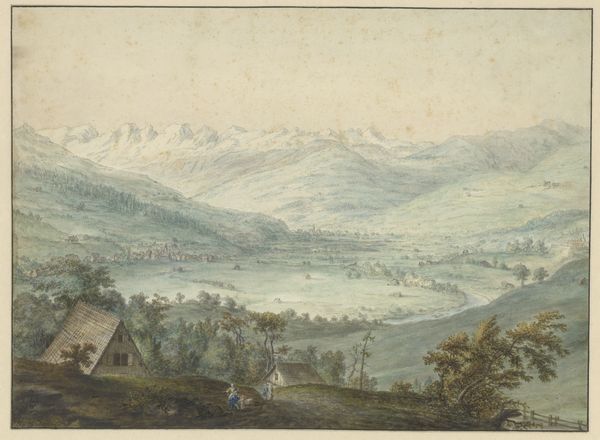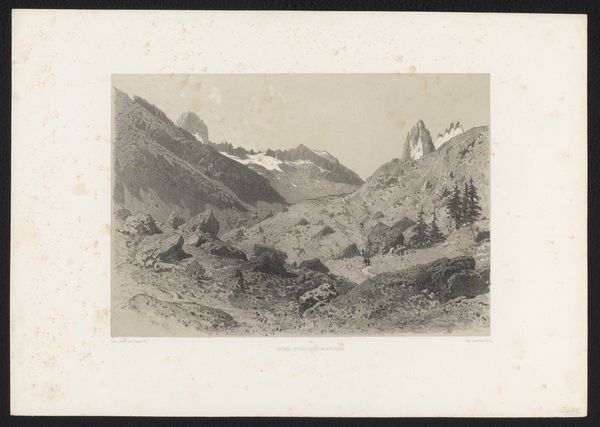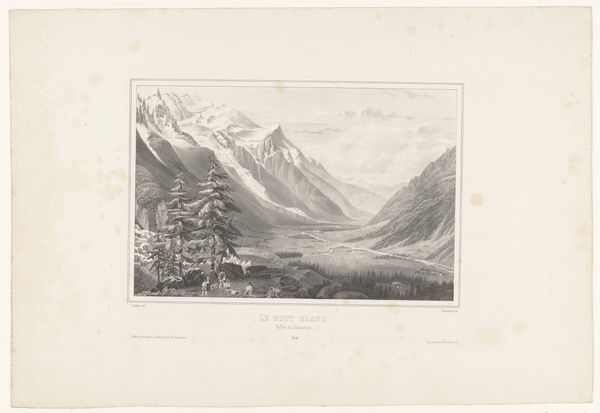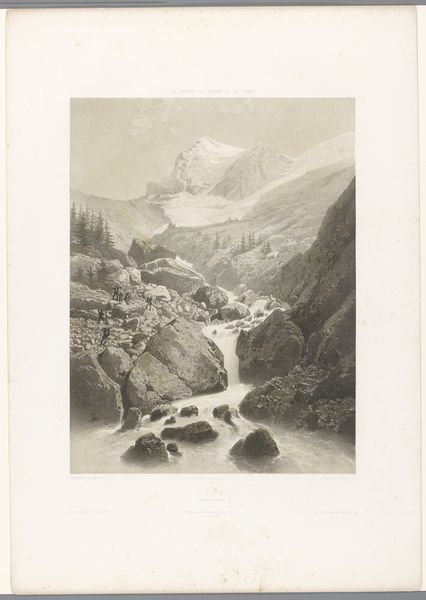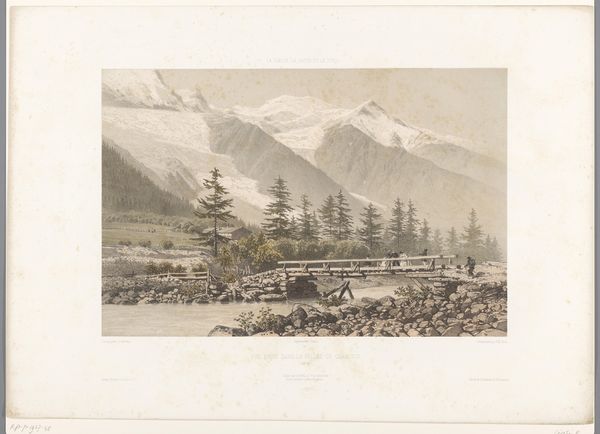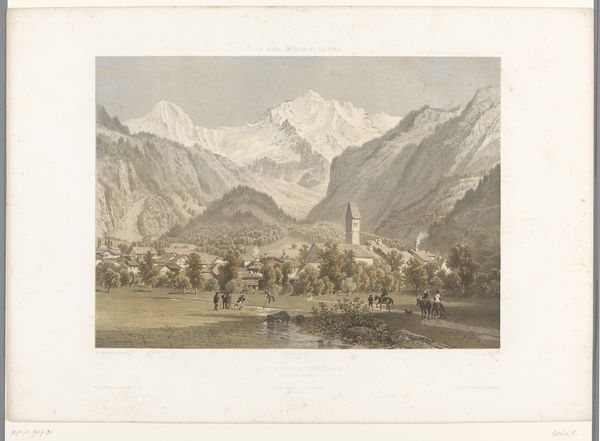
Dimensions: height 399 mm, width 510 mm
Copyright: Rijks Museum: Open Domain
Curator: This is Carl Ludwig Hackert’s “View of Chamonix at the Foot of Mont-Blanc," created around 1780. It’s a watercolour done en plein-air, characteristic of the Romantic landscape style. Editor: Wow, it’s breathtaking, but in a very controlled way. The majestic scale of the mountain is undeniable, but the whole composition feels very deliberate and almost staged. Curator: Indeed, Hackert’s landscapes are not just about depicting nature. As you mentioned, their construction is deliberate; think of how landscapes were deeply implicated in shaping national identity and aspirations. Chamonix, as a spectacle of the sublime, became a popular site to visit by aristocrats who would then acquire paintings of it. Editor: So it’s as much about the gaze of power as it is about the mountain itself. The people in the foreground almost look like they’re there for our benefit, as a focalizing lens onto the ‘awe-inspiring’ vista for consumption. Curator: Precisely! Hackert places us in the position of the enlightened viewer, experiencing the sublime. The detailed rendering also demonstrates artistic prowess and promotes a scientific interest in cataloging the natural world. These landscape images contributed to a cultural project as well as served the interests of an economic system rooted in tourism and collecting. Editor: Thinking about this now, I am questioning the way we have idealized the Romantic movement through the art canon while downplaying that even “nature” in art comes framed by specific interests. Here it's not just an appreciation for natural beauty; but an active performance of privilege. It even seems to justify certain inequalities by reinforcing a belief in the sublime potential available to everyone. Curator: I agree that understanding the art of the Romantic period necessitates analyzing these intertwined ideological complexities and understanding its political impact beyond simplistic understandings of ‘beauty.’ Editor: Reflecting on this, I feel like it challenges the concept of 'pristine' nature as we witness it here and exposes landscape paintings as instruments entangled in socioeconomic structures. Curator: Very insightful! Thank you. Editor: My pleasure, I learned a lot, too.
Comments
No comments
Be the first to comment and join the conversation on the ultimate creative platform.
